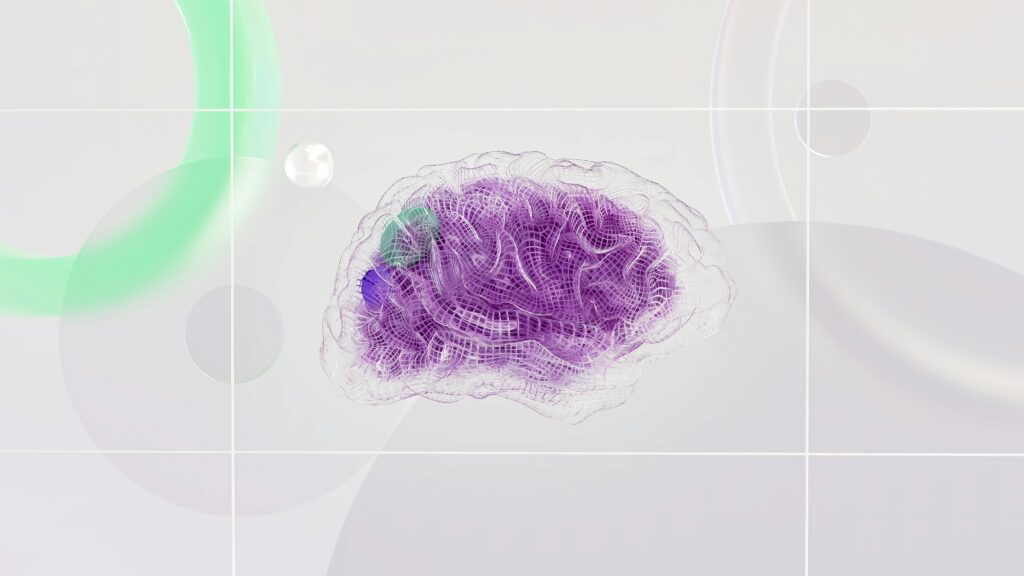Artificial Intelligence (AI) is reshaping industries, but organizations developing AI systems face a critical, often overlooked strategic risk: managing the retention of training data in compliance with European Union (EU) law. The GDPR emphasizes rapid deletion of personal data, while the EU AI Act requires long-term archival of system documentation. Navigating these conflicting requirements is essential for legal compliance, operational efficiency, and risk mitigation. An effective AI data retention strategy under the GDPR and the EU AI Act is now essential for organisations developing, deploying, or governing artificial intelligence systems in the European Union.
Executive Summary: The Dual Compliance Imperative and Strategic Findings

Organisations that leverage advanced data processing, particularly those developing complex Artificial Intelligence (AI) systems, face a critical and often unrecognized strategic risk: the prolonged retention of training data. European Union (EU) law establishes conflicting imperatives regarding data lifecycle management, creating a fundamental compliance challenge. The General Data Protection Regulation (GDPR) mandates personal data erasure as soon as the data is no longer required for its established purpose, while the newly implemented EU AI Act demands lengthy archival of system documentation.
| The GDPR is the primary constraint on personal data, and the AI Act governs long-term retention of non-personal audit and system records. |
The Inescapable Regulatory Conflict: Delete Now vs. Document for a Decade
The core of the conflict lies in the tension between personal data protection and system accountability. The GDPR is clear: personal data must be erased once its specific processing purpose is fulfilled. This is enforced by the Storage Limitation Principle (Article 5(1)(e)). Retention beyond this defined necessity, even if the data might be useful for future research or system retraining, is deemed a direct violation unless a new, distinct, and lawful purpose is established.
Conversely, the EU AI Act introduces stringent requirements for system traceability, particularly for High-Risk AI Systems (HRAS). Providers of HRAS must maintain comprehensive technical documentation, quality management system records, and conformity declarations for up to 10 years after the system is placed on the market (Article 18, EU AI Act). This requirement applies to system records, ensuring long-term accountability, but does not override the fundamental protection afforded to individuals’ data under the GDPR.
The GDPR Foundation: The “Storage Limitation” Principle
The entire framework of data retention under EU law rests on the GDPR’s Storage Limitation Principle (Article 5(1)(e)).This foundational rule dictates that personal data must be kept “for no longer than is necessary for the purposes for which the personal data are processed.” This is the core principle driving all retention decisions.
| Personal data shall be: (e) kept in a form which permits identification of data subjects for no longer than is necessary for the purposes for which the personal data are processed; personal data may be stored for longer periods insofar as the personal data will be processed solely for archiving purposes in the public interest, scientific or historical research purposes or statistical purposes in accordance with Article 89(1) subject to implementation of the appropriate technical and organisational measures required by this Regulation in order to safeguard the rights and freedoms of the data subject (‘storage limitation’); GDPR Article 5(1)(e) |
The GDPR does not set generic retention times, instead placing the full burden on the data controller to define, document, and justify a specific deletion timeline for every category of data. If personal data (which is defined broadly to include information beyond PII, like cookie IDs) is used to train a system, the retention clock starts ticking. Organisations leveraging advanced data processing face a critical strategic risk: retaining training data for too long. The GDPR is unambiguous; personal data must be erased once its specific processing purpose. Retention beyond that, even for potential future research, is a direct violation unless a new, distinct, and lawful purpose is established.

Defining the Critical Strategic Risk for GDPR non-compliance
The strategic risk is precisely defined by failing to establish, document, and legally justify a specific deletion timeline for every category of personal data used in the training process. The absence of generic retention times in the GDPR places the full burden of definition and justification squarely upon the data controller.
This environment forces organizations to confront a critical trade-off: is the unproven, speculative future value of raw personal data worth the risk of fines and potential data breaches? The calculation strongly favors deletion. As,
- Failing to define and document specific deletion timelines exposes organizations to GDPR violations.
- Retaining data for future retraining or academic purposes is legally indefensible once the initial training purpose is fulfilled.
- Financial penalties for non-compliance can exceed the cost of implementing compliant, minimal-data systems.
The EU AI Act Layer: Traceability and Documentation
The EU AI Act introduces a layered approach to retention centered on system accountability rather than individual personal data. The rules are tied to the system’s risk profile, with High-Risk AI Systems (HRAS) (EU AI Act, Chapter 3) having the most stringent obligations.
Data Governance (Article 10) for HRAS requires that training, validation, and testing data sets be relevant, representative, and free of errors. While not a direct retention rule, this implicitly requires maintaining data sets for a period necessary for auditing and quality checks during the development phase.
The most critical requirement is Documentation Retention (Article 18): HRAS providers must keep key records (Technical Documentation, Quality Management System, etc.) for 10 years after the system is placed on the market. This 10-year rule applies to documentation and metadata, not the raw personal data itself, which must be deleted sooner under the GDPR. This 10-year period covers documentation, quality records, and conformity declarations. It is vital to understand that this does not override the GDPR’s Storage Limitation Principle (Article 5(1)(e)).
Raw personal data used for training must still be deleted sooner. However, the requirement for Record-Keeping (Logging) (Article 12) means that systems must automatically record events and usage logs. While these logs should ideally be anonymised, their retention period must be “appropriate” extending the non-personal data record-keeping timeline. This mandates a long-term, non-personal data retention strategy that must be carefully integrated with the strict, short deletion cycles required by the GDPR for raw personal data.
Blending the GDPR and EU AI Act Requirements
The intersection of the GDPR and the EU AI Act necessitates a blended compliance strategy, particularly concerning purpose and identification. The GDPR’s Purpose Limitation principle (Article 5(1)(b)) demands that the purpose for processing, such as system training, be explicitly defined. This definition directly dictates the maximum legal retention period for personal data.
| Personal data shall be: (b) collected for specified, explicit and legitimate purposes and not further processed in a manner that is incompatible with those purposes; further processing for archiving purposes in the public interest, scientific or historical research purposes or statistical purposes shall, in accordance with Article 89(1), not be considered to be incompatible with the initial purposes (‘purpose limitation’); GDPR Article 5(1)(b) |
Implementing De-Identification in Your AI Data Retention Strategy under the GDPR and the EU AI Act
The best path for long-term data use is de-identification:
- Pseudonymisation only reduces identifiability; the data remains personal data under the GDPR and the Storage Limitation Principle still applies.
- Anonymisation is the only legal release valve. If the data is permanently and irreversibly stripped of identifiers; it is no longer considered personal data (GDPR Recital 26). Therefore, it can be retained indefinitely.
It’s critical to remember that while the raw personal data must be deleted, the trained system itself (the output) can be retained.
Reconciling the GDPR’s Right to Erasure with the EU AI Act Traceability

The most direct legal challenge is reconciling the GDPR’s Right to Erasure (Article 17) with the ongoing need for system traceability under the AI Act. If a system is trained on personal data, the controller must maintain the technical ability to honor an erasure request.
This is the Purpose Limitation Conflict: if the initial purpose (training) is complete, retaining the raw personal data is a violation of the GDPR. Developers must implement technical solutions like secure deletion protocols immediately after a system is finalised. Using robust, irreversible anonymisation is the only way to retain data sets without triggering the GDPR’s strict retention clock.
When facing overlapping regulations, the GDPR always acts as the primary constraint on personal data. Its Storage Limitation Principle sets the hard ceiling for raw personal data retention. This is regardless of the EU AI Act’s documentation rules.
The crucial legal distinction is that PII and other personal data used to create the system must be subject to rigorous deletion procedures the moment the training purpose ends. The technical documentation, metadata, and system logs (which should contain no personal data) are then subject to the EU AI Act’s extended 10-year retention rules. This hierarchy demands that the deletion process (the GDPR) must happen first, leaving only the audit trail (EU AI Act) behind.
| The documentation required under the EU AI Act must serve dual purposes: it must confirm the system’s data quality (EU AI Act) and must also provide evidence of the deletion or robust anonymization event, confirming that the GDPR timeline was honored. |
Table: Comparison of differences
| Summary | GDPR (Personal Data Protection) | EU AI Act (HRAS Accountability) |
| Asset | Raw PII, Pseudonymous Data, Identifiable Metadata. | Technical Documentation, QMS, System Logs (Non-Personal), Conformity Records. |
| Core Principle | Storage Limitation (Delete when purpose ends). | Accountability & Traceability (Document for 10 years). |
| Max Retention Period | Defined by Controller’s Justified Purpose (Short/Medium Term). | 10 years after the system is placed on the market. |
| Legal Hierarchy | Primary binding constraint on identifiability. | Governs the necessary audit trail after GDPR constraints are met. |
| Highest Penalty Risk | 4% Global Annual Turnover (Financial). | Operational disruption, market access denial. |
The Financial & Operational Cost of AI Data
Compliance is not just a cost, but a powerful risk mitigator. Storing raw personal data beyond the necessary period is a direct violation of the GDPR’s Storage Limitation Principle. This exposes an organisation to fines of up to 4% of global annual turnover (GDPR Article 83).
Beyond the fines, excessive data retention creates massive operational liability. Longer storage times mean higher infrastructure costs and a larger surface area for security breaches. Every day the data is held, the probability of a costly Data Subject Request (DSR) increases, demanding expensive legal and technical personnel to fulfill. Compliant, timely deletion is ultimately the most financially responsible strategy.

Should you store raw personal data for training?
Organisations often retain raw data for perceived future utility, perhaps for retraining a system. The GDPR forces a hard strategic trade-off: is the speculative future value of that raw personal data worth the immediate, tangible risk of massive fines and data breaches?
The EU AI Act demands auditable records, but these should be built from fully anonymised data or non-personal data metadata. The cost calculation is simple: the threat of financial penalty for retaining personal data too is a much greater risk or potential cost than developing a compliant, data-minimal system. A mature data strategy prioritises de-identification and deletion over retention, significantly reducing the organisation’s regulatory and financial exposure.
| Data Type | Legal Status | Retention Requirement | Effect on AI Systems |
| Raw Personal Data (PII) | Personal data under the GDPR | Must be deleted as soon as the training purpose ends (Article 5(1)(e)) | Limits availability for retraining; requires technical deletion pipelines; increases compliance complexity if data spans multiple systems |
| Pseudonymised Data | Still personal data under the GDPR | Same as raw personal data; cannot retain for 10-year audit | Provides limited utility for internal processing, but retention beyond purpose is legally risky; still triggers Data Subject Requests and fines if not deleted |
| Irreversibly Anonymised Data | Non-personal data (Recital 26) | Can be retained indefinitely | Supports long-term model auditing, retraining, bias checks, and the EU AI Act traceability; safe to store for 10-year audit requirements |
| Metadata / Technical Documentation | Non-personal data | Retention required up to 10 years under the EU AI Act (Articles 10, 18) | Supports HRAS compliance; ensures traceability without exposing personal data; must be designed to avoid inclusion of PII |
| System Logs | Non-personal / anonymized | Retention period must be “appropriate,” often aligned with the EU AI Act 10-year audit | Enables audit and monitoring; must be anonymized to avoid GDPR violations; operational impact includes storage and secure access management |
Strategic Recommendations
The regulatory landscape governing AI development in the EU is defined by a critical tension:
- the immediate obligation to protect individual privacy (GDPR) and
- the extended obligation to ensure system safety and traceability (EU AI Act).
Compliant data management requires recognizing the GDPR’s Storage Limitation Principle as the absolute constraint on personal data retention. This is regardless of the EU AI Act’s documentation timelines. The solution is architectural separation, where raw personal data is subject to automated deletion, and the audit trail is constructed exclusively from non-personal, irreversibly anonymized assets.
TLDR;
- Under the GDPR, personal data must be deleted once its specific purpose is fulfilled. This limits how long raw training data can be stored.
- For AI developers, this means models cannot indefinitely rely on historical raw personal data. This can potentially impact retraining strategies and model evolution.
